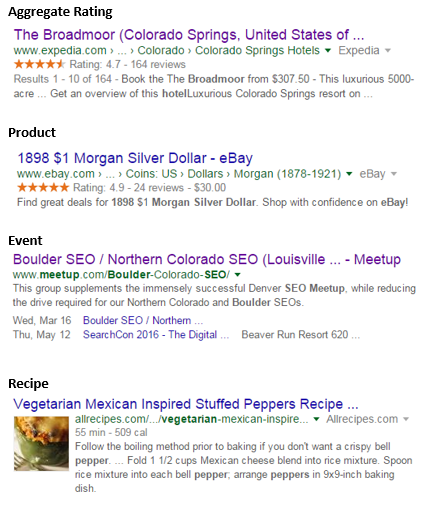In a previous blog post, we went over the basics of content optimization – what…

I Got 99 Problems But A Schema Ain’t One
I Got 99 Problems But A Schema Ain’t One
Schema has evolved over the last few years to play a now almost crucial role in SEO, making it one of the foundations for a successful campaign of local, national and E-commerce businesses. In fact, in late 2015 John Mueller of Google actually went so far as to say that structured data markups like schema could become a ranking signal at some point.
The basic idea is that you use a semantic markup code to further identify the “juicy bits” of your webpage that could provide the most relevant information to searchers and users. This markup, in turn then helps the search engines associate your newly marked up content with user queries, building the bridge of relevance between your content and what the searcher is looking for.
So just exactly why are these bits juicy? The name, address and contact info provides relevant and important information to a visitor. Using a “local business” schema markup here we can send a signal to the search engines telling exactly what these lines of text are about. The search engine doesn’t have to decide what this content is about, instead, we’re telling it. We designate the address, phone number and contact information and associate it with the domain, the business and the geographic area.
Kiss Metrics put it best “Schema tells the search engines what your data means, not just what it says.”
The local business schema is only of one of a huge range of schema markups that can used. Everything from people and places to products, events and brands can be marked up. Some of the most common markups that can be used for almost any site are:
- Local business
- Event
- Aggregate Rating
- Organization
- Product
- Blog Post
- Person
You can find a full list of objects and places available markup on schema.org
Ok, so a schema markup can tell the search engines what my page is about, is that it?
Not by a long shot!
In addition to helping communicate information, schema can help to get nifty rich snippets to appear in search results. What are rich snippets? They’re those little additions in a SERP aside from the page title and meta description that can give even more information to searchers and help with CTR.
We’re not done yet though..
Schema can also help to influence the Google Knowledge Graph results. The Knowledge Graph is that fun little box on the right side some search results that shows information about the entity you’re searching on. It could be a logo, location, company information, competitor’s, photos and more.
In a lot of cases Google creates these on their own with information they’ve dredged up from across the net.
With schema, you can help to influence what information goes into these. Better to tell Google what you want displayed then let them decided for themselves. There have been reports of incorrect or even competitors info being pulled into Knowledge Graph results.
That being said, just because you mark it up with schema, there’s no guarantee that Google will display it, but it’s better than having nothing at all.
This whole schema thing sounds awesome, should I just mark up everything I possibly can?
Probably not. As with all good things, there will always be people who abuse it (this is why Google won’t let us have nice things).
Google has a spam manual action for “Spammy Structured Markup”.
“Markup on some pages on this site appears to use techniques such as marking up content that is invisible to users, marking up irrelevant or misleading content, and/or other manipulative behavior that violates Google’s Rich Snippet Quality guidelines.”
Schema should only be used when and where it’s appropriate, so if you’re in doubt, best not to risk the black eye from our benevolent search overlords. You’ve got your 99 problems, don’t let schema spam be one.
Ready to learn more? Here’s some great starting points.
Want to learn even more about schema? Call the experts at SocialSEO today for more information.





